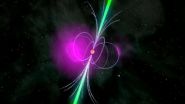(Press-News.org) Brain tumors are the primary cause of cancer mortality in children. Even if a cure is possible, young patients often suffer from the stressful treatment which can be harmful to the developing brain. The most common childhood brain tumors are medulloblastoma and pylocytic astrocytoma.
In order to find new target structures for more gentle treatment methods, cancer researchers are systematically analyzing all changes in the genetic material of such tumors. This is the mission of the PedBrain consortium, which was launched in 2010 as the first German part in the International Cancer Genome Consortium (ICGC). The PedBrain Tumor network, which is coordinated by Professor Peter Lichter of DKFZ and Professor Roland Eils (DKFZ and Heidelberg University), has now published, jointly with numerous collaboration partners, an evaluation of the first 125 genome analyses of medulloblastomas.
"We can already see great differences in the genomes of medulloblastomas from one patient to the next," says Peter Lichter. "But we have also identified a number of frequent and characteristic genomic alterations that may lead the way to developing new methods of diagnosis and treatment."
Brain tumors with four sets of chromosomes are particularly aggressive
A high percentage of medulloblastomas – particularly among those with very malignant progression – has four sets of chromosomes instead of two as normal. Medulloblastomas are classified into four groups according to aggressiveness. In the study, about half of tumors belonging to groups 3 and 4, which are very difficult to treat, were found to have this aberration. "It is not proven that the extra chromosomes cause cancer. But it is certain that they occur at a very early stage of the cancerous process," Lichter explains.
Cells with four sets of chromosomes have been found in several types of cancer. However, this genomic aberration also offers a chance of specifically attacking tumors. At the German Cancer Research Center (DKFZ), researchers collaborating with Bayer Healthcare are currently working to develop an agent which specifically inhibits the growth of cells with more than two sets of chromosomes.
About one third of individual mutations in medulloblastoma are found in genes that play a part in what are called epigenetic modifications. "This finding shows once more that drugs influencing such modifications will become increasingly important in cancer treatment," says Professor Dr. Stefan Pfister, a pediatrician and molecular biologist. DKFZ and Heidelberg University Hospital are already testing such promising substances to treat specific pediatric tumors.
The total number of genomic alterations in medulloblastoma increases with the age of patients. "Although many scientists have supposed that there is such a correlation, it has never been documented before," Stefan Pfister explains. "We suspect, however, that the foundation for medulloblastoma is laid already during embryonic development."
For the first time, the PedBrain researchers have also found what are called fusion genes in medulloblastoma. Such genes are formed when, due to genetic accidents, cancer-promoting genes are fused together and new proteins occur as a result. Such fusion genes cause a number of cancers such as chronic myelogenous leukemia (CML). For this cancer, researchers have succeeded in developing a very effective drug against the BCR-ABL fusion gene, which is highly specific for leukemia cells.
"Along with a multitude of individually occurring mutations, we were able to define a number of typical groups of mutations, which will show us the way to new strategies of fighting medulloblastoma", says Peter Lichter to sum up. "Given the genetic complexity and heterogeneity of this tumor type, a useful future approach would be to analyze the tumor genome in each affected child in order to identify the most promising treatment."
International collaboration to analyze tumor genomes
The International Cancer Genome Consortium (ICGC), a network of scientists from currently 14 countries, aims to obtain a comprehensive description of genomic and epigenomic changes in all relevant cancers. Germany participates with the PedBrain Tumor project to analyze pediatric brain tumors (medulloblastoma, which in Germany affects approximately 100 children each year; and pilocytic astrocytoma, which is diagnosed in about 200 children each year). As part of the PedBrain Tumor project, 300 tumor samples of each tumor type will be analyzed, along with the same number of healthy samples from the same patients in order to identify changes that are cancer-specific.
The PedBrain Tumor network consists of researchers from seven institutes led by project coordinator Peter Lichter of DKFZ. Alongside DKFZ, participating project partners in Heidelberg are: the National Center for Tumor Diseases (NCT), Heidelberg University and the University Hospital, and the European Molecular Biology Laboratory (EMBL). In addition, scientists from Düsseldorf University Hospital and the Max Planck Institute for Molecular Genetics in Berlin have taken on tasks within the network project.
PedBrain Tumor was supported by the German Cancer Aid (Deutsche Krebshilfe) with funds of eight million euros and has been funded by the Federal Ministy of Education and Research (BMBF) since 1 July 2012 with another seven million euros.
Furthermore, the PedBrain researchers from DKFZ have contributed results of their medulloblastoma analyses to another two publications in the current issue of Nature. Besides the PedBrain Tumor network, scientists from DKFZ are collaborating in the genome analysis of early prostate cancer (coordination: DKFZ and University Medical Center Hamburg-Eppendorf) and B cell lymphomas (coordination: University of Kiel).
###David TW Jones, Natalie Jäger, ..., Roland Eils, Stefan M Pfister and Peter Lichter, commissioned by the ICGC PedBrain Tumor Project: Dissecting the genomic complexity underlying medulloblastoma. Nature 2012, DOI: 10.1038/nature11284
The German Cancer Research Center (Deutsches Krebsforschungszentrum, DKFZ) with its more than 2,500 employees is the largest biomedical research institute in Germany. At DKFZ, more than 1,000 scientists investigate how cancer develops, identify cancer risk factors and endeavor to find new strategies to prevent people from getting cancer. They develop novel approaches to make tumor diagnosis more precise and treatment of cancer patients more successful. Jointly with Heidelberg University Hospital, DKFZ has established the National Center for Tumor Diseases (NCT) Heidelberg where promising approaches from cancer research are translated into the clinic. The staff of the Cancer Information Service (KID) offers information about the widespread disease of cancer for patients, their families, and the general public. The center is a member of the Helmholtz Association of National Research Centers. Ninety percent of its funding comes from the German Federal Ministry of Education and Research and the remaining ten percent from the State of Baden-Württemberg.
Genome analysis of brain tumors showing the way to new treatment strategies
2012-07-26
ELSE PRESS RELEASES FROM THIS DATE:
First photo evidence of snub-nosed monkey species in China
2012-07-26
Chinese researchers have published the first evidence that a population of the recently discovered snub-nosed monkey, Rhinopithecus Strykeri, live in China. Until now researchers have been unable to photograph the monkey, whose upturned nostrils are said to make it sneeze in the rain. The paper is published in the American Journal of Primatology.
The species was first discovered by a team led by Ngwe Lwin from the Myanmar Biodiversity and Nature Conservation Association and described by Dr Thomas Geissman in the American Journal of Primatology in October 2010. It was ...
Study associates excess maternal iodine supplementation with congenital hypothyroidism in newborns
2012-07-26
Cincinnati, OH. July 26, 2012 – Congenital hypothyroidism is thyroid hormone deficiency at birth that, if left untreated, can lead to neurocognitive impairments in infants and children. Although the World Health Organization recommends 200-300 µg of iodine daily during pregnancy for normal fetal thyroid hormone production and neurocognitive development, the US Institute of Medicine considers 1,100 µg to be the safe upper limit for daily ingestion. A case series scheduled for publication in The Journal of Pediatrics describes three infants who developed congenital hypothyroidism ...
Teamwork against Benzene
2012-07-26
This press release is available in German.
Leipzig. The carcinogenic harmful substance benzene can seriously impact the soil and ground water following chemical accidents or at old industrial sites. Nevertheless, bacteria exist which can degrade this compound even in the absence of oxygen. Until now it was not clear which organisms take part in this process and how they work together. With modern analytical procedures scientists of the Helmholtz Centre for Environmental Research (UFZ) have succeeded for the first time in tracking the path of this harmful substance through ...
New stroke treatments becoming a reality
2012-07-26
Scientists led by the President of The University of Manchester have demonstrated a drug which can dramatically limit the amount of brain damage in stroke patients.
Professor Dame Nancy Rothwell, Professor Stuart Allan and their team have spent the last 20 years investigating how to reduce damage to the brain following a stroke.
They have been testing the effectiveness of the drug Anakinra (IL-1Ra), which is already used for rheumatoid arthritis in experimental studies of stroke.
This new study builds on previous research, although the big difference is that rats ...
Switching the state of matter
2012-07-26
Sixty years after the transistor began a technological revolution that transformed nearly every aspect of our daily lives, a new transistor brings innovations that may help to do so again. Developed at RIKEN, the device uses the electrostatic accumulation of electrical charge on the surface of a strongly-correlated material to trigger bulk switching of electronic state. Functional at room temperature and triggered by a potential of only 1 V, the switching mechanism provides a novel building block for ultra low power devices, non-volatile memory and optical switches based ...
A pulsar with a tremendous hiccup
2012-07-26
This press release is available in German.
Pulsars are superlative cosmic beacons. These compact neutron stars rotate about their axes many times per second, emitting radio waves and gamma radiation into space. Using ingenious data analysis methods, researchers from the Max Planck Institutes for Gravitational Physics and for Radio Astronomy, in an international collaboration, dug a very special gamma-ray pulsar out of data from the Fermi Gamma-ray Space Telescope. The pulsar J1838-0537 is radio-quiet, very young, and, during the observation period, experienced the strongest ...
New biomarker for common lung cancer predicts responses to chemotherapy
2012-07-26
Patients with the most common type of lung cancer are notoriously insensitive to chemotherapy drugs, including cisplatin. New findings related to the cellular pathways that regulate responses to cisplatin have now been published by Cell Press on July 26th in the journal Cell Reports. The findings reveal a potential biomarker that can be used to predict how these patients will respond to chemotherapy, as well as the patients' overall prognosis, paving the way for personalized treatment strategies.
Non-small cell lung cancer (NSCLC) is one of the leading causes of cancer-related ...
Methane measurements at low level flight
2012-07-26
A team of scientists from the Alfred Wegener Institute for Polar and Marine Research in the Helmholtz Association (AWI) and the GFZ German Research Centre for Geosciences has just completed an airborne measurement campaign that allowed for the first time to measure large-scale methane emissions from the extensive Arctic permafrost landscapes. The study area extended from Barrow, the northernmost settlement on the American mainland, across the entire North Slope of Alaska, to the Mackenzie Delta in the Northwest Territories of Canada. The airborne measurements (Airborne ...
Unprecedented accuracy in locating brain electrical activity with new device
2012-07-26
Researchers at Aalto University in Finland have developed the world's first device designed for mapping the human brain that combines whole-head magnetoencephalography (MEG) and magnetic resonance imaging (MRI) technology. MEG measures the electrical function and MRI visualizes the structure of the brain. The merging of these two technologies will produce unprecedented accuracy in locating brain electrical activity non-invasively.
We expect that the new technology will improve the accuracy of brain mapping of patients with epilepsy. It may also improve the diagnosis of ...
DNA damage in roofers due to PAH exposure – possible cancer link
2012-07-26
Roofers and road construction workers who use hot asphalt are exposed to high levels of polycyclic aromatic hydrocarbons (PAHs). A University of Colorado Cancer Center study published this week in the British Medical Journal Open shows that roofers have higher PAH blood-levels after a shift than before and that these high levels of PAHs are linked with increased rates of DNA damage, and potentially with higher cancer risk.
"We've known for some time that roofers and road workers have higher cancer rates than the general population, but we also know roofers have a higher ...




